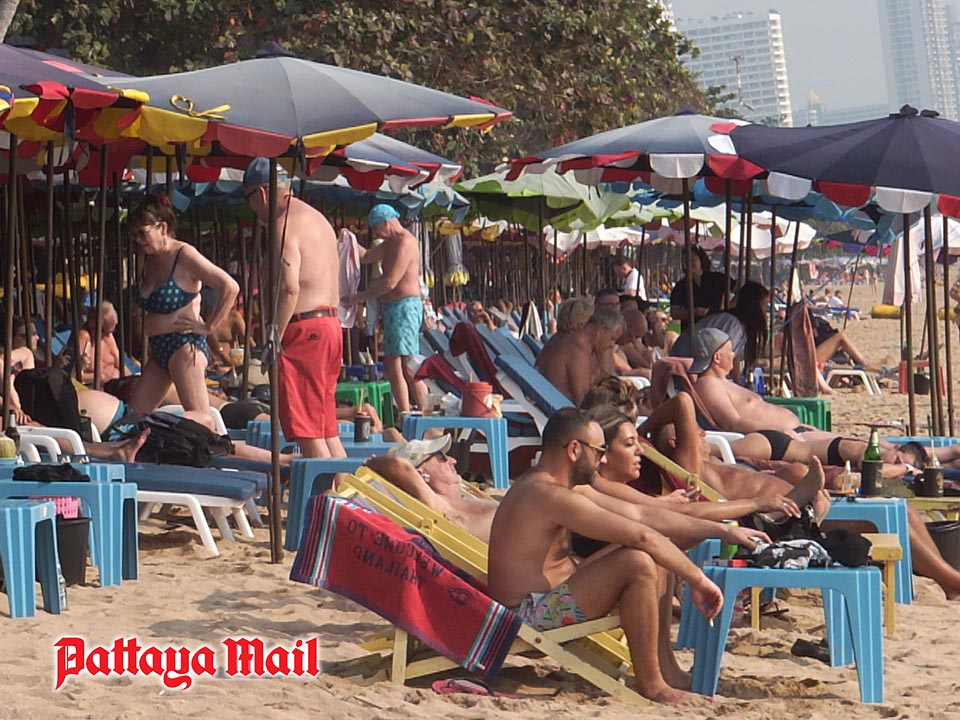Pattaya’s future hinges entirely on tourism success—no Plan B if recovery falters
Despite hope in government tourism programs, public trust remains low—results must speak louder. (Photo by Jetsada Homklin)
PATTAYA, Thailand – As the second half of 2025 unfolds, Pattaya finds itself clinging to a singular hope: that tourism, and those driving it, can carry the city through an era of dwindling domestic spending, shaky public trust, and rising economic uncertainty. With no fallback industry and limited investor confidence beyond hospitality and entertainment, the city’s recovery now rests almost entirely in the hands of tour operators, hoteliers, influencers, and government schemes that must prove their worth fast — or risk losing public faith altogether.
A recent Suan Dusit Poll conducted by Suan Dusit University underscores the fragile economic mood among Thai citizens, with 43.48% of respondents saying they still have enough money to travel in the second half of the year — but only if they tighten their belts. Another 26.91% say they’ve had to shelve travel plans completely, while just 17.16% report being able to travel as usual.
Still, despite economic headwinds, travel remains a mental health lifeline for many. “Thais aren’t giving up on travel,” noted Dr. Pornpan Buathong, president of Suan Dusit Poll. “It’s one of the few ways people cope with the pressures of daily life.” What’s needed, she added, is not just tourism promotion, but real support: smart, sustained policy that hits the mark.
One such initiative — the government’s “Khon-La-Khrueng” (Half-Half) domestic tourism subsidy program for 2025 — drew interest from 73.68% of respondents. But even as people welcome the offer, 57.53% admit they have little to no trust in the current administration’s ability to effectively manage or promote tourism. Their skepticism is rooted in past inconsistencies, sluggish rollouts, and a sense that bureaucratic execution often fails to match the program’s promise.
According to Assoc. Prof. Dr. Phimmada Wichasilp, Dean of Tourism and Service School at Suan Dusit University, the numbers reveal a tough truth: over 70% of Thai travelers are now forced to limit their tourism budgets, directly in line with national economic forecasts from the Joint Standing Committee on Commerce, Industry, and Banking (JSCCIB), which predicts sluggish growth between 1.5–2.0% for mid-2025. Health concerns and climate unpredictability remain major deterrents as well, with 62.83% of respondents citing disease outbreaks and 58.40% citing extreme weather and natural disasters as key concerns when deciding whether to travel.
As for travel preferences, 63.98% of respondents favored eco and adventure tourism, while 54.83% leaned toward cultural, historical, and local-lifestyle experiences. Another 48.56% prioritized wellness, spa, and leisure getaways — a sign that even during hard times, people still seek escape, connection, and restoration.
In Pattaya, where tourism makes up the city’s core economy, these national sentiments have a direct local echo. Confidence in public sector leadership is low, and unless the tourism sector — public and private alike — can deliver a coherent, transparent strategy, the city risks stalling out.
Observers say the stakes are especially high in cities like Pattaya, where tourism isn’t just an industry — it’s survival. “There is no Plan B,” one local hotelier put it bluntly. “If tourism doesn’t work, nothing else will.”
With Pattaya now fully in the hands of its tourism stakeholders, there’s little margin for missteps. Public trust must be rebuilt not with slogans, but with clear results. Programs like Khon La Khrueng can offer some relief, but only if implementation is swift, smooth, and centered on the real needs of struggling Thai travelers. Otherwise, even the city built for escape could find itself with nowhere to go.



